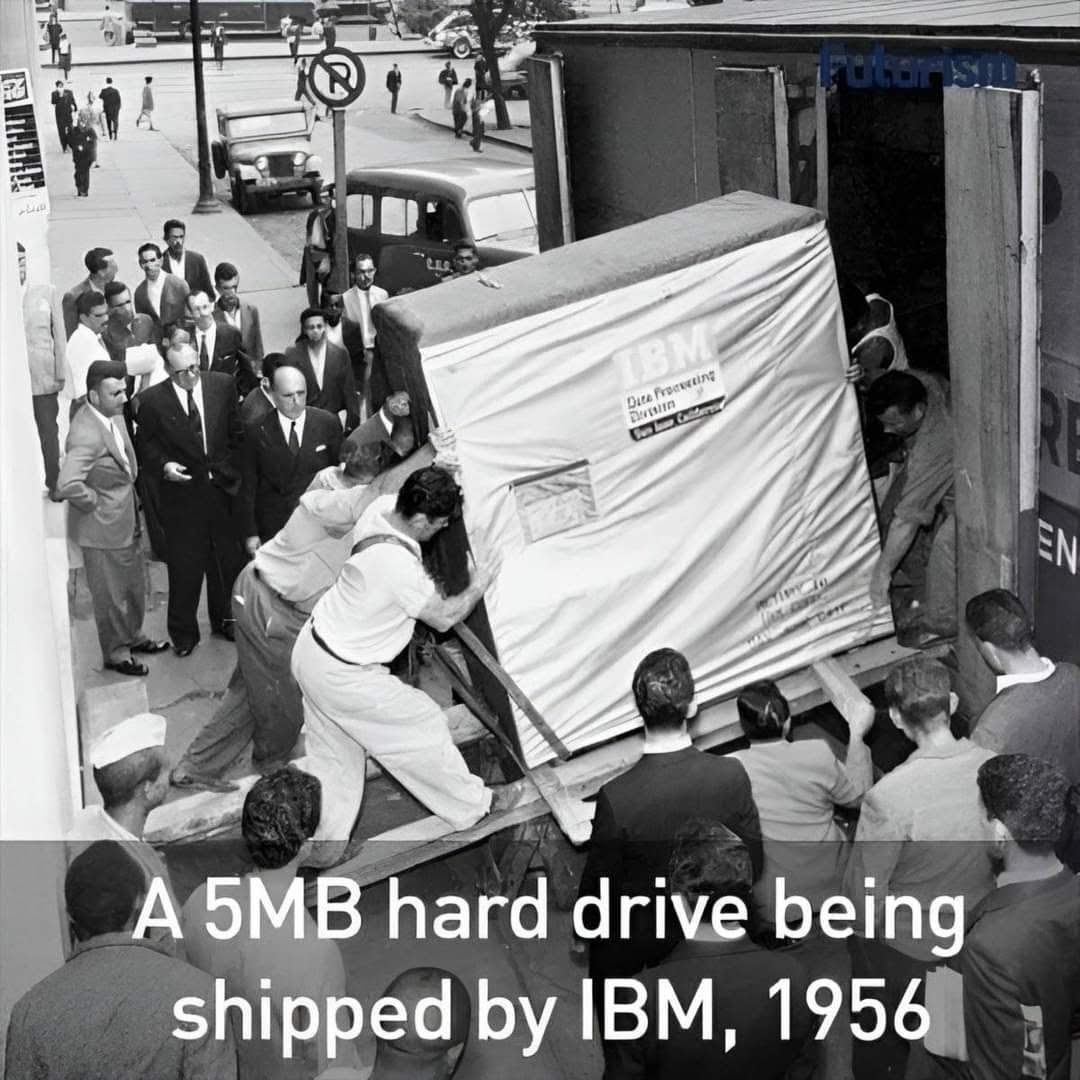What 5 Megabytes of Computer Data Looked Like in 1966 ~ Vintage Everyday
-
This post did not contain any content.

-
This post did not contain any content.
The average modern website takes more than this per page to display its content.. it's absurd.
-
This post did not contain any content.
It still looks like that but it did then, too.
-
This post did not contain any content.
With that even less you could run the internet
-
She looks like she KNOWS you're thinking of taking one single punchcard from the middle of the pile, thus rendering the whole thing useless.
And she's not having your shit.
-
This post did not contain any content.
I'm over here managing a local back up of about half a TB of pics and videos. Also - I moved from Google Photos to Ente. So much data and I know people out there have way more than I do. Crazy to think about.
-
She looks like she KNOWS you're thinking of taking one single punchcard from the middle of the pile, thus rendering the whole thing useless.
And she's not having your shit.
Yes, she certainly has the look of someone who knows what a huge amount of work these piles of cards represent. There would have been no turbulent kids running around these.
-
Yes, she certainly has the look of someone who knows what a huge amount of work these piles of cards represent. There would have been no turbulent kids running around these.
Look at those forearms. Absolutely she knows how much work this is. Also absolutely she numbered them all in pencil.
-
She looks like she KNOWS you're thinking of taking one single punchcard from the middle of the pile, thus rendering the whole thing useless.
And she's not having your shit.
She lives in the Mary Poppins house and has to stabilize her stack of cards like this every time the neighbour fires the canon.
-
This post did not contain any content.
Seems about right. One card had 80 columns, a byte for each one, so 5,000,000 bytes divided by 80 would be 62,500 cards.
-
It still looks like that but it did then, too.
What would be truly amazing would be a 5MB variant of this picture so no matter what it always looks like 5MB
-
This post did not contain any content.

-
She looks like she KNOWS you're thinking of taking one single punchcard from the middle of the pile, thus rendering the whole thing useless.
And she's not having your shit.
one can number them with a pen, and then find the missing one or guess what was there
-
The average modern website takes more than this per page to display its content.. it's absurd.
And most can be replaced with nothing with no loss in value
-
With all the onlookers.
-
Is the nice lady still inside?
-
The average modern website takes more than this per page to display its content.. it's absurd.
The average modern website steals more personal data than this from you when you visit
-
one can number them with a pen, and then find the missing one or guess what was there
Ooohh, did they have any redundancy in them?
-
Ooohh, did they have any redundancy in them?
Yes, it's called human brain. If it makes sense that a missing punch card would contain jump to address from some register, then make another one such.
I'm joking.
-
This post did not contain any content.
When I started in software, my first employer was just phasing out punched cards for programming. One of my jobs was to work out how programming would be done using terminals instead of the old workflow of submitting coding sheets to card-punch operators who would then pass the jobs on to operations. Typically you'd find out if your code compiled the next morning. There was a big basket by the computer hall where they'd deposit your card deck and a massive printout on fanfold paper of the job status and (if it went tits up) the stack dump.
By that time (late 1970s), cards had sequence numbers (usually numbered 10, 20, 30 so you could interpolate a few cards if need be). If you dropped a deck on the floor, you had to carefully gather them back up (so they wouldn't get bent or torn), feed them into a card sort machine, and wait until the deck was sorted. You could also run a special batch job to clone a card deck, for example if you wanted to box it up and ship it to another location.
The big challenge with cardless programming was that computer reliability wasn't great in those days, so you needed reliable persistent storage of some kind. That was generally magnetic tape. Disk drives were way too expensive, and optical disks hadn't been widely adopted yet. So to save your work, you used tar or some non-/Unix-OS equivalent. There was version-control software, but it was primitive (rcs, which later had svn built over it).
On the positive side, you could compile and build without an overnight wait.



